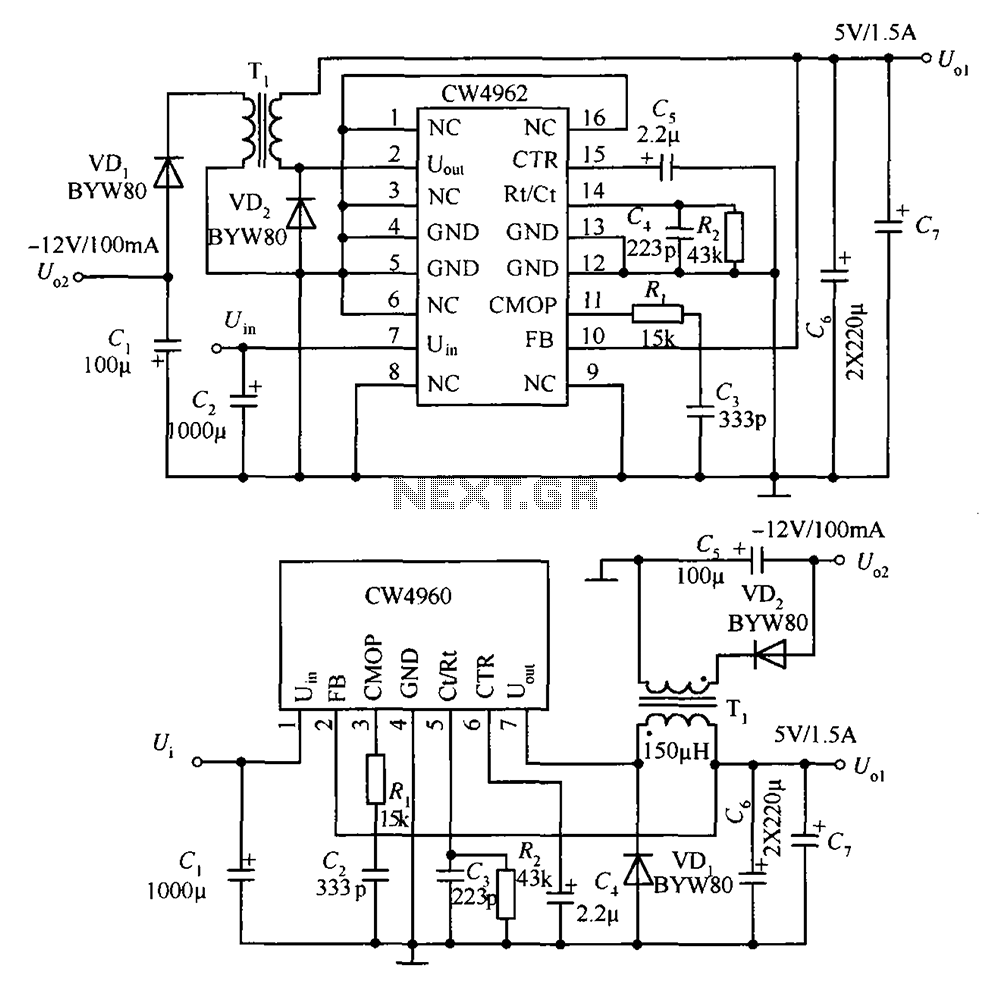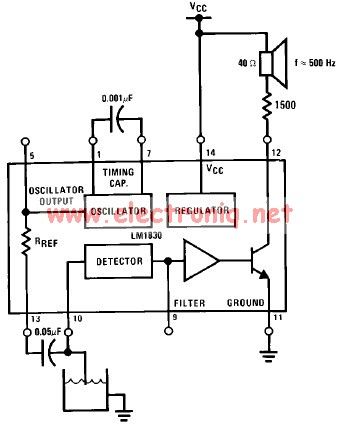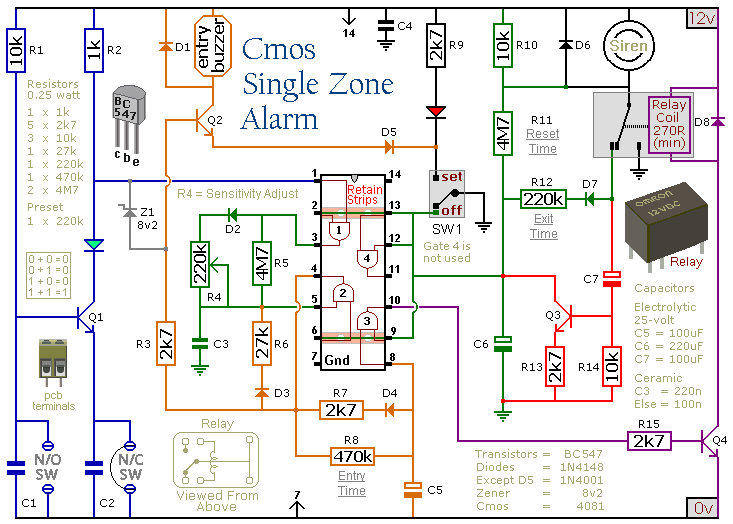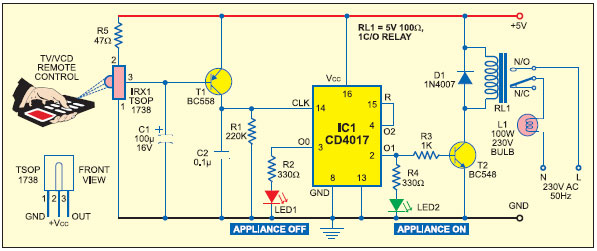
High-Power Alarm Driver Circuit
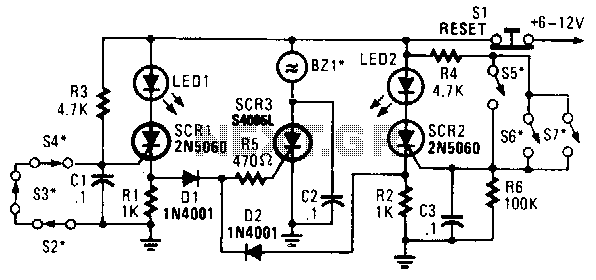
In this circuit, a low-powered silicon-controlled rectifier (SCR) is utilized to trigger a higher-powered SCR. When a switch is opened (S2, S3, S4) or closed (S5, S6, S7), either SCR1 or SCR2 is activated. This action subsequently triggers SCR3 through diodes D1, D2, and resistor R5. BZ1 serves as a high-powered alarm of the interrupting type.
The presented circuit employs a low-powered SCR to control the activation of a higher-powered SCR, which is a common configuration in electronic control systems where isolation and amplification of control signals are required. The operation begins with the status change of switches S2, S3, S4, S5, S6, or S7. Each switch corresponds to specific operational conditions that dictate whether SCR1 or SCR2 will be triggered.
Upon the closure or opening of these switches, a corresponding SCR is activated, allowing current to flow through the circuit. The activation of either SCR1 or SCR2 leads to the conduction of current through diodes D1 and D2. These diodes are essential for protecting the circuit by ensuring that current flows in the correct direction, thus preventing any potential damage due to reverse polarity.
Resistor R5 plays a crucial role in this circuit by limiting the current flowing to SCR3. This is important for ensuring that SCR3 operates within its specified parameters, avoiding any risk of damage due to excessive current. Once SCR3 is triggered, it activates BZ1, which is a high-powered alarm designed to alert users of a specific condition. The interrupting type alarm indicates that it will produce sound or signal interruptions upon activation, providing immediate feedback regarding the circuit's state.
This configuration is particularly useful in applications such as safety systems, alarm systems, or any scenario where a low-power signal needs to control a more significant load. The combination of SCRs and diodes in this circuit effectively demonstrates the principles of controlled rectification and signal amplification, ensuring reliable operation in response to user inputs. In this circuit, a low-powered SCR is used to trigger a liigher powered SCR. When a switch is opening (S2, S3, S4) or closing (S5, S6, S7), either SCR1 or SCR2 triggers. This triggers SCR3 via Dl, D2, and R5. BZ1 is a high-powered alarm of the on interrupting type.
The presented circuit employs a low-powered SCR to control the activation of a higher-powered SCR, which is a common configuration in electronic control systems where isolation and amplification of control signals are required. The operation begins with the status change of switches S2, S3, S4, S5, S6, or S7. Each switch corresponds to specific operational conditions that dictate whether SCR1 or SCR2 will be triggered.
Upon the closure or opening of these switches, a corresponding SCR is activated, allowing current to flow through the circuit. The activation of either SCR1 or SCR2 leads to the conduction of current through diodes D1 and D2. These diodes are essential for protecting the circuit by ensuring that current flows in the correct direction, thus preventing any potential damage due to reverse polarity.
Resistor R5 plays a crucial role in this circuit by limiting the current flowing to SCR3. This is important for ensuring that SCR3 operates within its specified parameters, avoiding any risk of damage due to excessive current. Once SCR3 is triggered, it activates BZ1, which is a high-powered alarm designed to alert users of a specific condition. The interrupting type alarm indicates that it will produce sound or signal interruptions upon activation, providing immediate feedback regarding the circuit's state.
This configuration is particularly useful in applications such as safety systems, alarm systems, or any scenario where a low-power signal needs to control a more significant load. The combination of SCRs and diodes in this circuit effectively demonstrates the principles of controlled rectification and signal amplification, ensuring reliable operation in response to user inputs. In this circuit, a low-powered SCR is used to trigger a liigher powered SCR. When a switch is opening (S2, S3, S4) or closing (S5, S6, S7), either SCR1 or SCR2 triggers. This triggers SCR3 via Dl, D2, and R5. BZ1 is a high-powered alarm of the on interrupting type.


